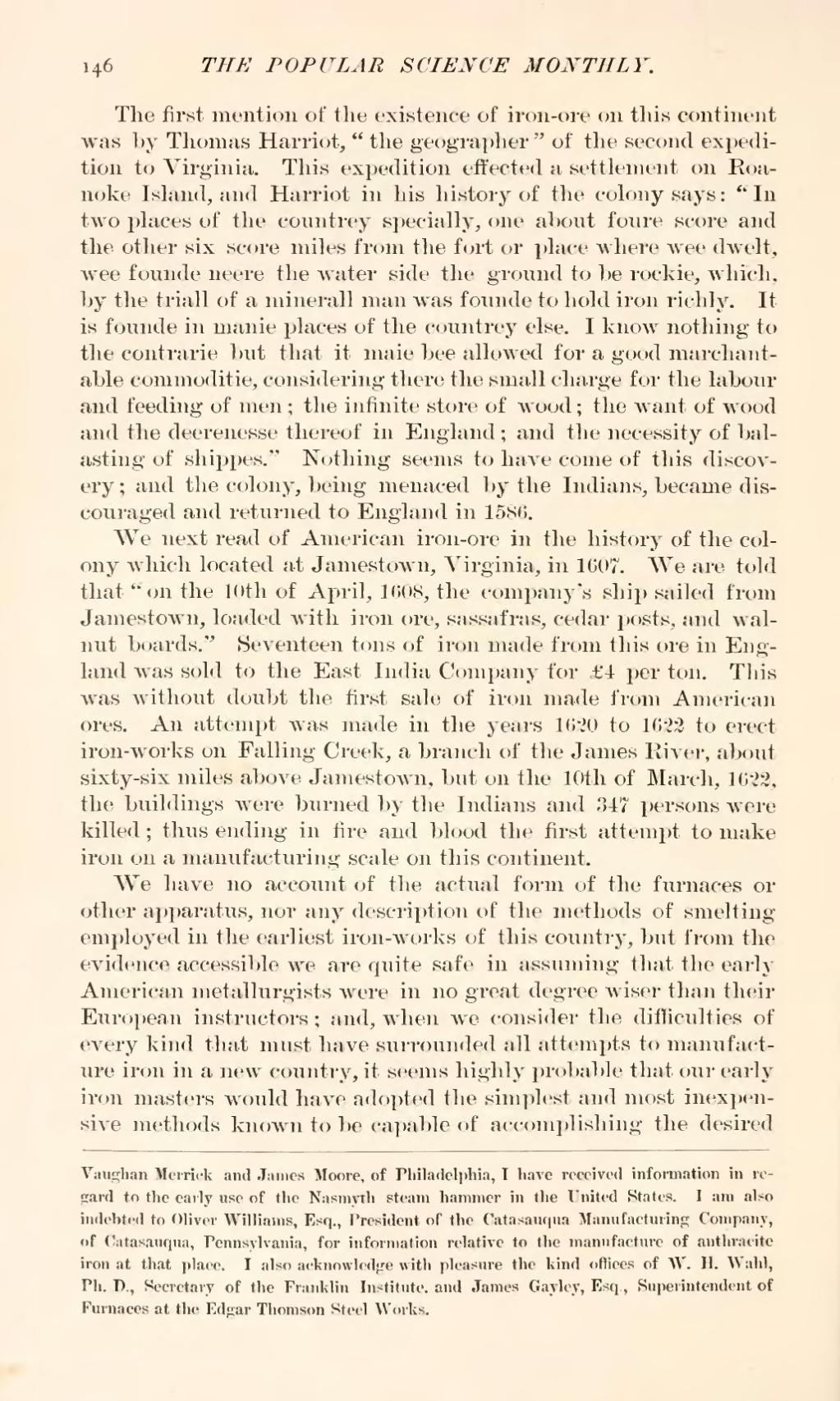The first mention of the existence of iron-ore on this continent was by Thomas Harriot, "the geographer" of the second expedition to Virginia. This expedition effected a settlement on Roanoke Island, and Harriot in his history of the colony says: "In two places of the countrey specially, one about foure score and the other six score miles from the fort or place where wee dwelt, wee founde neere the water side the ground to be rockie, which, by the triall of a minerall man was founde to hold iron richly. It is founde in manie places of the countrey else. I know nothing to the contrarie but that it maie bee allowed for a good marchantable commoditie, considering there the small charge for the labour and feeding of men; the infinite store of wood; the want of wood and the deerenesse thereof in England; and the necessity of balasting of shippes." Nothing seems to have come of this discovery; and the colony, being menaced by the Indians, became discouraged and returned to England in 1586.
We next read of American iron-ore in the history of the colony which located at Jamestown, Virginia, in 1607. We are told that "on the 10th of April, 1608, the company's ship sailed from Jamestown, loaded with iron ore, sassafras, cedar posts, and walnut boards." Seventeen tons of iron made from this ore in England was sold to the East India Company for £4 per ton. This was without doubt the first sale of iron made from American ores. An attempt was made in the years 1620 to 1622 to erect iron-works on Falling Creek, a branch of the James River, about sixty-six miles above Jamestown, but on the 10th of March, 1622, the buildings were burned by the Indians and 317 persons were killed; thus ending in fire and blood the first attempt to make iron on a manufacturing scale on this continent.
We have no account of the actual form of the furnaces or other apparatus, nor any description of the methods of smelting employed in the earliest iron-works of this country, but from the evidence accessible we are quite safe in assuming that the early American metallurgists were in no great degree wiser than their European instructors; and, when we consider the difficulties of every kind that must have surrounded all attempts to manufacture iron in a new country, it seems highly probable that our early iron masters would have adopted the simplest and most inexpensive methods known to be capable of accomplishing the desired
Vaughan Merrick and James Moore, of Philadelphia, I have received information in regard to the early use of the Nasmyth steam hammer in the United States. I am also indebted to Oliver Williams, Esq., President of the Catasauqua Manufacturing Company, of Catasauqua, Pennsylvania, for information relative to the manufacture of anthracite iron at that place. I also acknowledge with pleasure the kind offices of W. H. Wahl, Ph. D., Secretary of the Franklin Institute, and James Gayley, Esq., Superintendent of Furnaces at the Edgar Thomson Steel Works.
